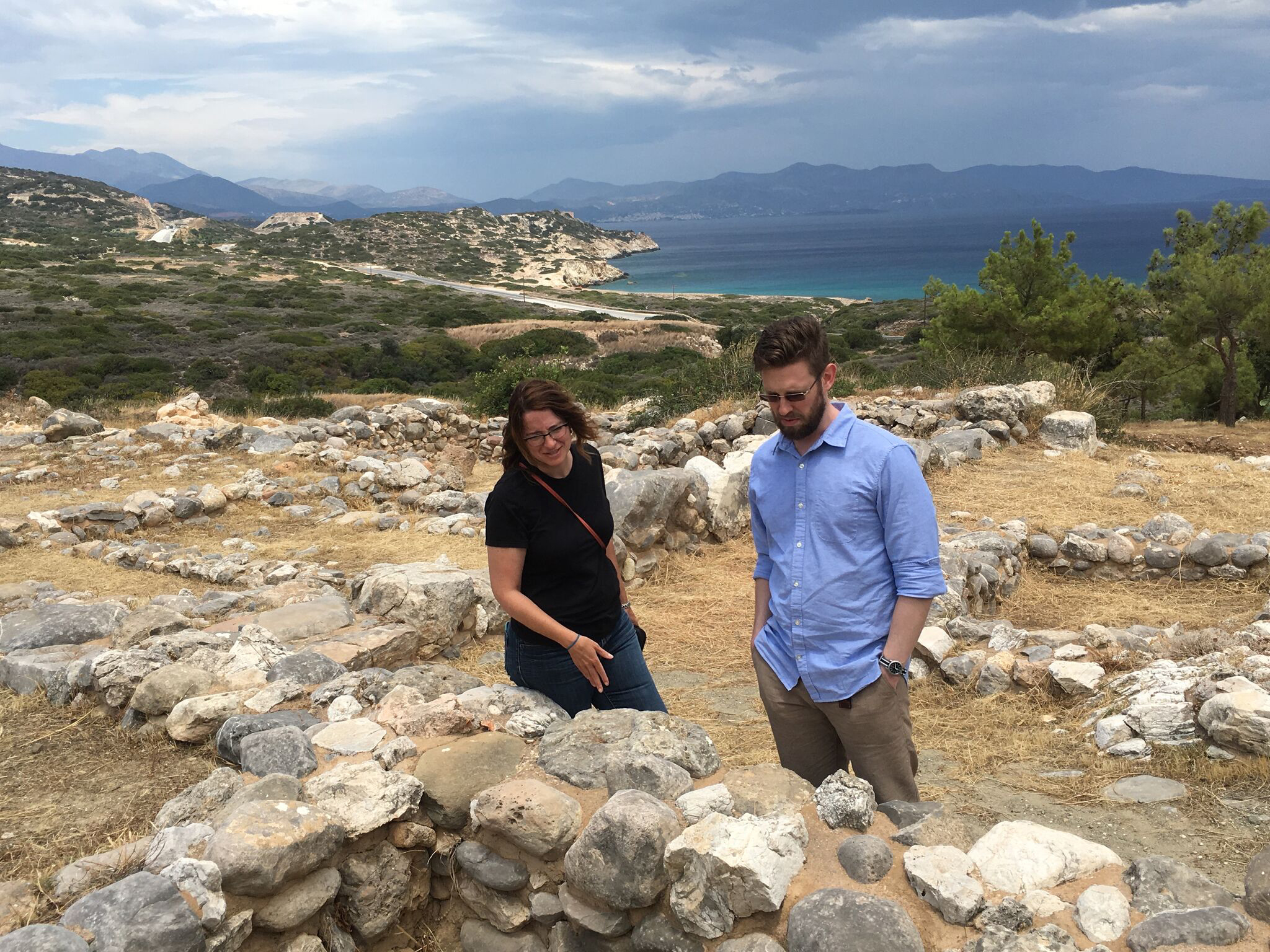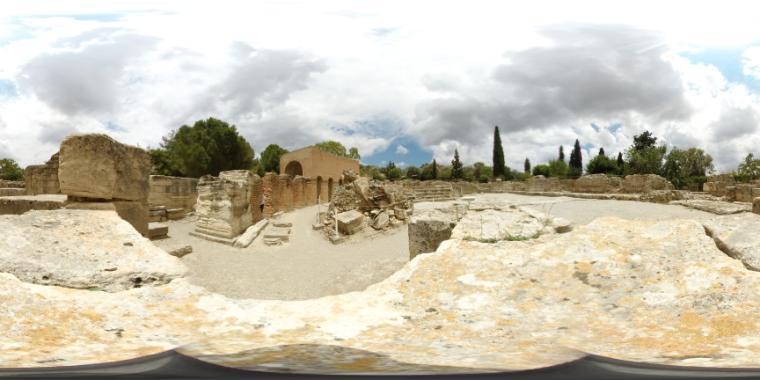
A Golden Opportunity to Learn About Bronze Age Engineering
When people from different disciplines interact, serendipitous collaborations often arise, a fact mechanical engineering Assistant Professor Michael Taylor and classics Lecturer Angela Holzmeister have rediscovered. “One of the benefits of faculty housing is that people from different schools, who may never have interacted with each other, start talking,” said Taylor.
Seeking a way to unite their distinct and rarely overlapping disciplines, the pair seized on an idea: travel to Crete with a small group of students and faculty from classics and engineering to research ancient civilizations on site using modern technology. “Much of the history and myth of Crete,” Holzmeister explained, “focuses on the engineering feats of the Minoan civilization, roughly 2500 to 1500 BCE. Since then the Romans, Venetians, Ottomans, and other groups have inhabited the island, so you find artifacts from first century CE next to fifteenth century BCE. and evidence of later inhabitants repurposing their predecessors’ building sites and architectural features.” Pairing humanities students with engineers to study not only how technology advanced over the ages, but why it progressed the way it did given Crete’s geographical features and political, social, economic, and religious culture, seemed like a perfect path through the interdisciplinary labyrinth.
Supported by a university Teaching and Technology Innovation Grant, the pair traveled to Crete last summer to scout locations and determine how students could best use cutting-edge technologies to tease out secrets from the material culture—columns, arches, foundations, and more. “The 360-degree cameras available through SCU’s Academic Technology Department are ideal for documenting key engineering features of archaeological sites,” said Taylor. “They are small, easy to set up on craggy, uneven surfaces and controllable remotely through a smartphone app. The 360-degree images can help students build three-dimensional computer models of structural elements and form the basis of immersive case studies usable by both engineering and Classics faculty in the classroom.”
Pre-travel class time will be spent introducing students to the camera equipment and computer modeling as well as giving them background on what they will see on Crete. During the two weeks on the island, students will take images, make sketches, build preliminary CAD (computer-aided design) models, and will be reflecting on all they are taking in. “They will pick a site and photograph some feature there—an arch or column—and analyze, for example, the stress in it, why it was built as it was, or what caused it to fracture. Later they can put their 360-degree imaging into VR so others can experience what they have learned,” said Taylor. Students will work in small interdisciplinary teams to present the results of their analysis and explain the larger historical and cultural context of their findings.
Having returned from Crete with both a firmer understanding of how to structure their program and a stoked enthusiasm for pushing their idea forward, the unlikely collaborators will formalize a proposal to put before their departments, or perhaps to the Office of Global Engagement.
“What I like about this program is that it brings together so many threads and exposes students to learning from different perspectives and from context in a way they have probably never experienced before. Some of my best students are engineers, but their curriculum is so packed, they don’t have much opportunity to do a deep dive. Offering this summer program provides more liberal arts to add to their education as they explore engineering in relation to ancient civilizations. For classics students, they get to consider the everyday practicalities of the buildings and architectural features that are behind these great civilizations. Getting students to think more deeply about their own education and about the professions they intend to step into beyond SCU is what we strive for as educators, and this program really exemplifies Santa Clara’s mission to educate the whole person,” said Holzmeister.

A panoramic view of Gortyn, an archaeological site on Crete, taken with a 360-degree camera
Angela Holzmeister and Michael Taylor at an archaeological site in the Minoan town of Gournia, Crete